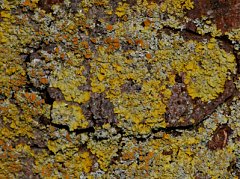 The idea of using carbon sequestration to reduce atmospheric CO2 levels has been bandied about for years, I vaguely recall writing about it when I first freelanced for New Scientist in 1990. It struck me then as a ludicrous approach to tackling climate change akin to sweeping the problem under the carpet. Now, a press release from another journal for which I once wrote on a regular basis, Chemistry & Industry (published for the UK’s Society of Chemical Industry) is suggesting yet another madcap approach to climate.
The idea of using carbon sequestration to reduce atmospheric CO2 levels has been bandied about for years, I vaguely recall writing about it when I first freelanced for New Scientist in 1990. It struck me then as a ludicrous approach to tackling climate change akin to sweeping the problem under the carpet. Now, a press release from another journal for which I once wrote on a regular basis, Chemistry & Industry (published for the UK’s Society of Chemical Industry) is suggesting yet another madcap approach to climate.
The “open source” concept being put forward by cquestrate.com and reported in C&I suggests that we could reduce atmospheric CO2 levels and so ameliorate anthropogenic global warming by heating millions of tonnes of limestone in the world’s deserts to release its locked in CO2, ship the resulting lime to the seaside and dump the rock into the oceans where it will apparently absorb twice as much dissolved CO2. It’s backed by multinational petrochemical giant Shell.
Now forgive me for being uber skeptical but isn’t there something just a little hypocritical about an oil company looking to macro scale chemical engineering to manipulate the environment. The C&I article quotes Tim Kruger, formerly of Shell, and now consulting on the project for Corven as mentioning Australia’s Nullarbor Plain as being a prime location for the process. Lots of energy from sunlight to heat the abundant limestone to calcify it. And, presumably excess energy to sequester the huge volumes of CO2 released at source.
The mention of Australia reminds me of another particularly crass attempt by humanity to control the environment that went badly wrong – the cane toad. The cane toad was introduced into Queensland, Australia, en masse, in the 1930s in an effort to control the cane beetle that was ravaging the sugar cane industry. Of course, cane toads are now one of the most widespread and biggest pests in the region, with no obvious way of controlling their numbers, other than introducing an exogenous, but unidentified predator species.
I suspect that, overall, dumping lime into the oceans will be as successful as dumping cane toads into sugar cane plantations. There will be unknown after shocks that will cause more harm to the environment and global ecosystems overall than anyone could predict.
First, off, there’s the problem of what to do with the CO2 released from the limestone mined in the deserts that serves as the raw material for the process. Secondly, the huge tonnages involved are going to be so big that this project really will never work, especially as shipping all that lime from the desert to the oceans will require energy and release its own huge quantities of CO2 before dumping even begins. But, more than that there will be enormous, unforeseen environmental effects of dumping this material into the oceans on such a scale.
The idea of using even “stranded” energy to release CO2 from limestone, ship the limestone to the oceans, where it will apparently absorb dissolved CO2, has to be fundamentally flawed. There are issues of pH, absorbancy, equilibria, and marine ecosystems to consider. Surely, it would be simpler and more efficient to find a way to tap the stranded energy and supply it to population centres directly, thus cutting our dependency on fossil fuels without attempting to tamper with the oceans. Several macroscale engineering ideas have been bandied about and some, such as iron seeding and nitrogen control, have even been trialled, with little success and evidence of detrimental environmental impact. Let’s not add lime to the list.
I interviewed Kruger for the August issue of Intute Spotlight in which I will cover this topic in more detail. You might also be interested in checking out the Sciencebase endsjobs.co.uk/environmental page.
 Remote arsenic assessment – A topic I’ve come back to again and again since I first covered for The Guardian the breaking news of arsenic contaminated tubewells on the Indian sub-continent in 1995. Now, an informatics approach to surface data could allow geologists and environmental scientists to identify regions of the world where people are at risk of exposure to arsenic in their drinking water without the need for widespread sampling to be undertaken. More…
Remote arsenic assessment – A topic I’ve come back to again and again since I first covered for The Guardian the breaking news of arsenic contaminated tubewells on the Indian sub-continent in 1995. Now, an informatics approach to surface data could allow geologists and environmental scientists to identify regions of the world where people are at risk of exposure to arsenic in their drinking water without the need for widespread sampling to be undertaken. More… We live in an age of chemophobia, an insidious disease that threatens our way of life, precludes R & D that might solve many of the environmental issues we face and prevents disease-stopping compounds being deployed where they are most needed in the developing world. Chemophobia is an irrational fear of all things chemical and is usually contracted by those already with naturophilia, the irrational love of all things natural.
We live in an age of chemophobia, an insidious disease that threatens our way of life, precludes R & D that might solve many of the environmental issues we face and prevents disease-stopping compounds being deployed where they are most needed in the developing world. Chemophobia is an irrational fear of all things chemical and is usually contracted by those already with naturophilia, the irrational love of all things natural. Apologies if, like me, you’re a Brit and prefer to refer to petrol and diesel, then apologies for today’s post title. But, I’ve noticed a flurry of complaints from Americans about the price of vehicle fuel, recently, and just had to comment. Complaints about the price of gas? I hear the good folks of England, Wales, Scotland, and Northern Ireland exclaim! Yes, indeed, apparently, filling your tank Stateside now costs a staggering $4 per gallon (about 8 pounds sterling!) Pah! You say, us Brits are paying the equivalent of over $10 per gallon these days.
Apologies if, like me, you’re a Brit and prefer to refer to petrol and diesel, then apologies for today’s post title. But, I’ve noticed a flurry of complaints from Americans about the price of vehicle fuel, recently, and just had to comment. Complaints about the price of gas? I hear the good folks of England, Wales, Scotland, and Northern Ireland exclaim! Yes, indeed, apparently, filling your tank Stateside now costs a staggering $4 per gallon (about 8 pounds sterling!) Pah! You say, us Brits are paying the equivalent of over $10 per gallon these days. Fresh, clean water is going to be increasingly in short supply. Despite the recent heavy rains across Southern Europe, the building of desalination plants in such regions, and the shipping in of water supplies from elsewhere is likely to increase in coming years, while desertification will maintain its dehydrating crawl and some regions of the developing world will continue to die of thirst in hotter dry season, while squandering the precious harvest of the rainy season.
Fresh, clean water is going to be increasingly in short supply. Despite the recent heavy rains across Southern Europe, the building of desalination plants in such regions, and the shipping in of water supplies from elsewhere is likely to increase in coming years, while desertification will maintain its dehydrating crawl and some regions of the developing world will continue to die of thirst in hotter dry season, while squandering the precious harvest of the rainy season.



 A panel of eighteen apparently maverick thinkers was charged with coming up with a to-do list for the twenty-first century by the US National Academy of Engineering (NAE). The maverick panel includes such notables as former director of the National Institutes of Health Bernadine Healy, Google co-founder Larry Page, geneticist and businessman
A panel of eighteen apparently maverick thinkers was charged with coming up with a to-do list for the twenty-first century by the US National Academy of Engineering (NAE). The maverick panel includes such notables as former director of the National Institutes of Health Bernadine Healy, Google co-founder Larry Page, geneticist and businessman 
